The Origin of Cosmic Rays
Release date: 2025-05-16
Visits: 750
Source: 山东高等技术研究院
The Origin of Cosmic Rays
Cosmic rays are primarily composed of high-energy particles and nuclei produced by Stellar Nucleosynthesis. They represent the only material samples from the depths of the universe and serve as a crucial source of information about astrophysical environments and physical laws under extreme conditions. The origin of cosmic rays is one of the most significant scientific questions in modern physics.

According to traditional theories, primary cosmic rays are believed to be mainly produced and accelerated in astrophysical sources such as stellar explosions, including nuclei of helium, carbon, oxygen, neon, magnesium, silicon, and iron. Secondary cosmic rays, including nuclei of lithium, beryllium, boron, and fluorine, are mainly generated by the collision of primary cosmic rays with interstellar matters during their propagation through the Milky Way. Due to limited precision from previous experimental observations, cosmic rays were classified only into primary and secondary categories, with no further distinctions within these groups.
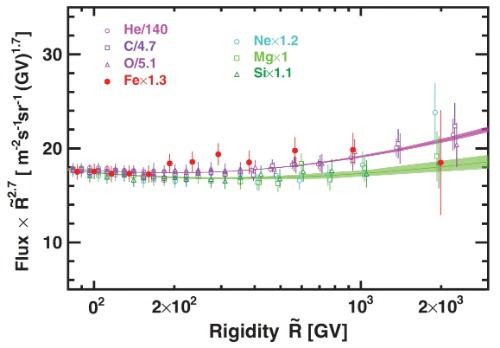
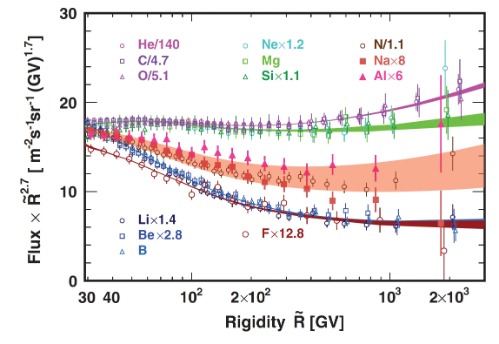
The AMS analysis team has analyzed a vast amount of cosmic ray nuclei data with unprecedented precision, revealing for the first time that within primary cosmic rays, the spectra of lighter nuclei such as helium, carbon, and oxygen differ from those of heavier nuclei like neon, magnesium, and silicon, indicating the existence of two distinct types of "primary cosmic rays". Among secondary cosmic rays, the heavier fluorine exhibits a different spectral shape compared to lighter lithium, beryllium, and boron, suggesting different propagation processes and thus two distinct types of "secondary cosmic rays". Additionally, nitrogen, sodium and aluminum contain both primary and secondary components, representing the third group of cosmic rays. The team also discovered that, the spectrum of heavier primary cosmic ray iron aligns with those of lighter helium, carbon, and oxygen, challenging existing theoretical models. Furthermore, cosmic ray sulfur shares the same spectrum shape with neon, magnesium, and silicon at high energy, while primary cosmic rays such as carbon, neon, magnesium, and sulfur contain non-negligible secondary cosmic ray components as well. These findings deepened our understanding of the origin and propagation of cosmic rays, challenging existing theoretical frameworks and providing a critical foundation for developing new theoretical models. SDIAT’s analysis team played a major role in five publications in the top-tier journal Physical Review Letters (PRL). Two of these publications were selected as PRL Editors' Suggestion and two were featured in the Physics Magazine of the American Physical Society (APS).

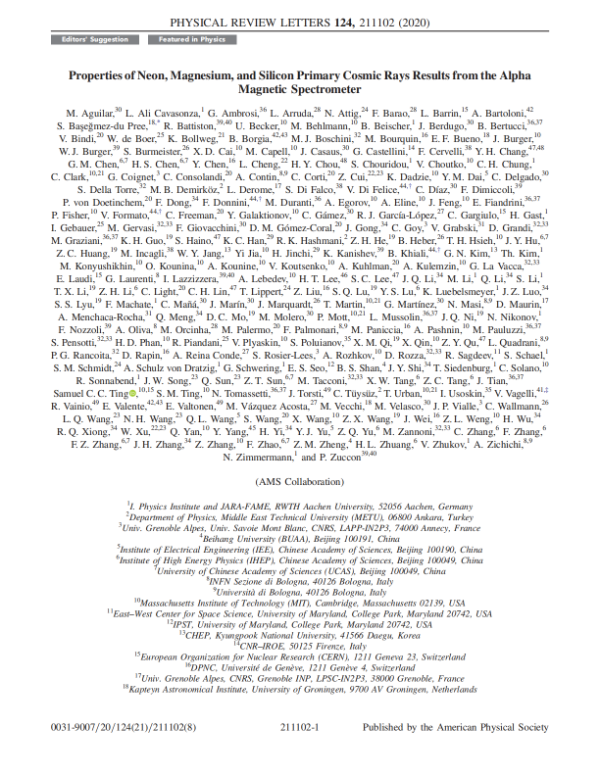 ,
,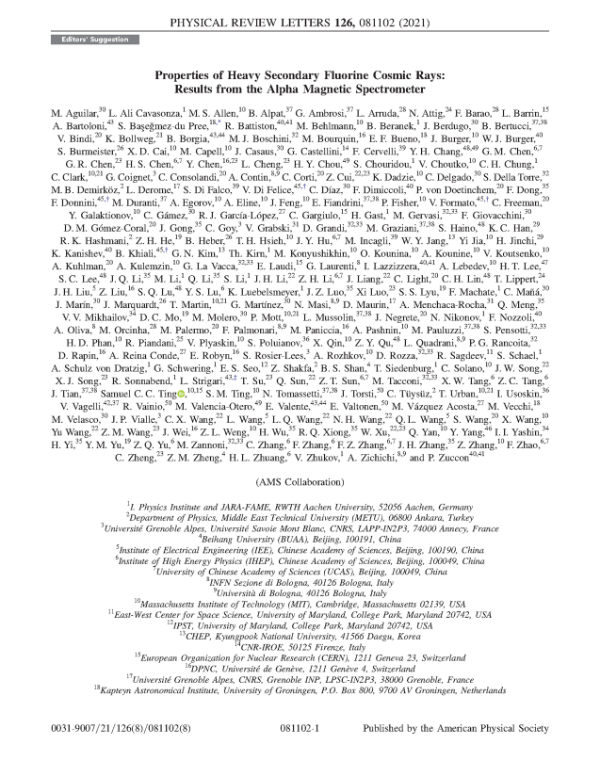 ,
,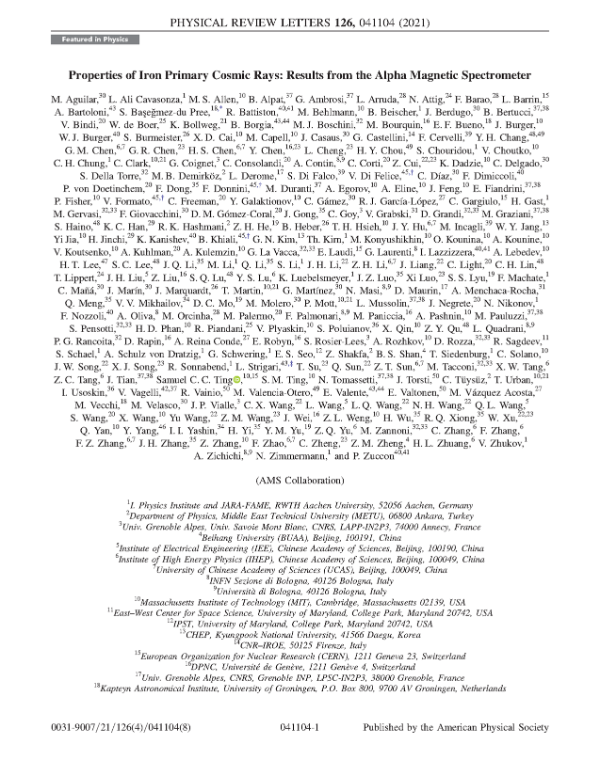 ,
,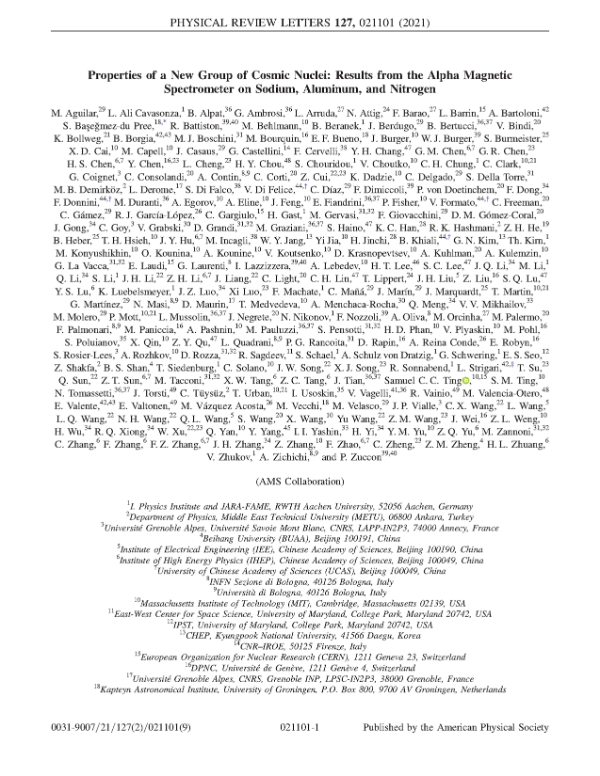 ,
,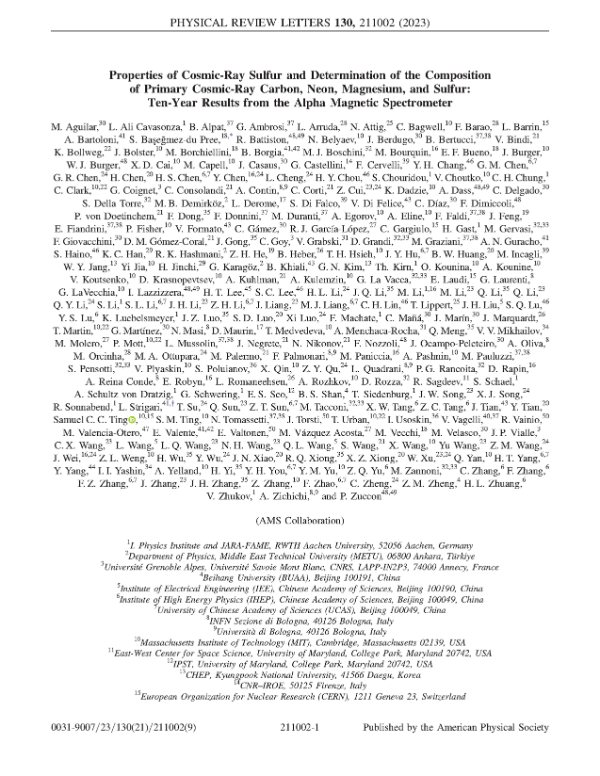

According to traditional theories, primary cosmic rays are believed to be mainly produced and accelerated in astrophysical sources such as stellar explosions, including nuclei of helium, carbon, oxygen, neon, magnesium, silicon, and iron. Secondary cosmic rays, including nuclei of lithium, beryllium, boron, and fluorine, are mainly generated by the collision of primary cosmic rays with interstellar matters during their propagation through the Milky Way. Due to limited precision from previous experimental observations, cosmic rays were classified only into primary and secondary categories, with no further distinctions within these groups.


The AMS analysis team has analyzed a vast amount of cosmic ray nuclei data with unprecedented precision, revealing for the first time that within primary cosmic rays, the spectra of lighter nuclei such as helium, carbon, and oxygen differ from those of heavier nuclei like neon, magnesium, and silicon, indicating the existence of two distinct types of "primary cosmic rays". Among secondary cosmic rays, the heavier fluorine exhibits a different spectral shape compared to lighter lithium, beryllium, and boron, suggesting different propagation processes and thus two distinct types of "secondary cosmic rays". Additionally, nitrogen, sodium and aluminum contain both primary and secondary components, representing the third group of cosmic rays. The team also discovered that, the spectrum of heavier primary cosmic ray iron aligns with those of lighter helium, carbon, and oxygen, challenging existing theoretical models. Furthermore, cosmic ray sulfur shares the same spectrum shape with neon, magnesium, and silicon at high energy, while primary cosmic rays such as carbon, neon, magnesium, and sulfur contain non-negligible secondary cosmic ray components as well. These findings deepened our understanding of the origin and propagation of cosmic rays, challenging existing theoretical frameworks and providing a critical foundation for developing new theoretical models. SDIAT’s analysis team played a major role in five publications in the top-tier journal Physical Review Letters (PRL). Two of these publications were selected as PRL Editors' Suggestion and two were featured in the Physics Magazine of the American Physical Society (APS).

 ,
, ,
, ,
, ,
,




